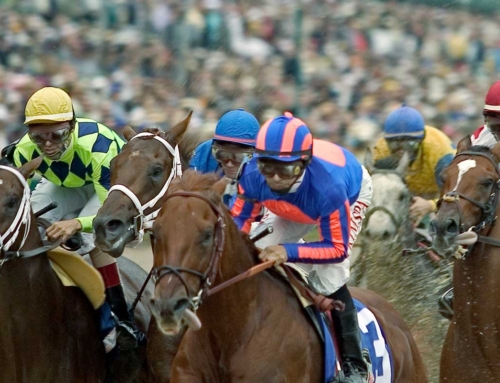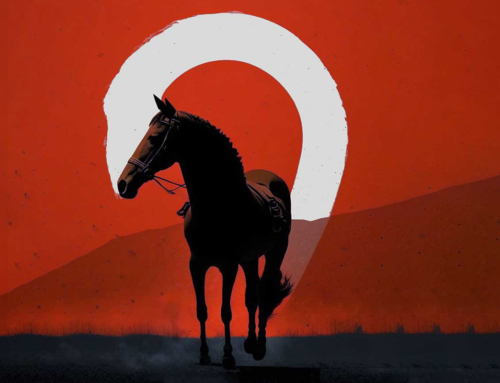
Chinese Philosophy
Harmonious Interactions of Yin, Yang, and Qi
Chinese philosophy has long held a belief in the idea of qi (pronounced CHē)—an invisible “life force” that permeates the universe and gives life to all things. Since the universe has no boundaries, qi is infinite. In Chinese cosmology, yin and yang are the opposing but complementary forces which generate and compose all things. The interaction of yin and yang forms a continuous cycle that causes all changes in the universe. Yin is the dark side of qi, while yang represents its positive side.
Early Daoists held that qi is found in people, too. In their breath, the vital energy of life, and in bodily fluids. Qi was regarded as the primary force that coordinated and controlled the fundamental activities of body organs. It was believed that qi passed through the body through a network of channels or meridians.
Acupuncture, an ancient Chinese medical technique in which thin needles are inserted into the body, is professed to affect the distribution of yin and yang in these channels, bringing them into balance so that qi can flow freely, allowing physical and emotional health.
The Daoists developed breathing techniques to alter and control the movement of qi within the body, their aim being to achieve physical longevity and spiritual power. Breathing exercises serve to alter qi movement to achieve physical and spiritual wellbeing. One such practice is qigong.
Qigong
Qigong is Chinese for energy exercises or breathing techniques. Practitioners of qigong believe that humans have three types of energy: 1) Shen (spirit, mind); 2) Jing (essence, strength); and 3) qi (vital energy). Qigong exercises focus on regulating and developing one’s qi. The exercises generally consist of breathing techniques and physical postures that involve proper balance, coordination, posture, and movement. In the Chinese culture, many people think qigong is synonymous with tai chi. Tai chi was developed by lay practitioners during China’s Ming Dynasty (1368–1644), while qigong has been practiced since at least 3000 BCE.
However, they are both distinct practices; qigong focuses on practical health benefits, while tai chi is more artistic and martial in nature. This difference also shows up in their names: qigong translates literally to breathwork, whereas tai chi means supreme ultimate fist.
Despite their differences, qigong and tai chi can be considered yin and yang – they share much of their history and philosophies, though each comes from a different angle.
In the suspense thriller novel Last Flower by Niklas Three, qigong helps a character recover from an injury while trekking through the Black Dragon Mountains in China.
Excerpt from Last Flower: A Suspense Thriller Novel by Niklas Three. © Reprinted by permission. All rights reserved.
Two hundred yards into the jog, a twitch in his right thigh was the first indication of trouble. Another hundred, and involuntary muscle twinges rippled from glute to knee. Anticipating a problem, he pulled up. It was too late. His hamstring contracted violently.
Dropping to the ground, he rolled on his backpack. A turtle flipped on his shell. Teeth gritted from the excruciating pain, Zhang released his rifle, grabbed behind his calf with both hands, and lifted. Massaging his thigh was like kneading steel—his muscles were clenched hard.
Resigned to being stuck in the tall grass, leg held in a modified qigong stretch position, he practiced deep breathing the thin mountain air. Meditating on his situation, he marveled at voluminous clouds defining nebulous shapes in the azure sky and wondered about Xìn.
Was his commanding officer far up the steep, looking back with binoculars? Thinking he was a slacker? He’d joke with Xìn when he caught up. If I only had one day to live, I would spend it on the rock wall. Why? Because pinned to the cliff face with you watching my ordeal felt like a fucking eternity. Was this an army operation? Or a physical fitness test? This whole escapade was reminiscent of the PT punishments doled out by his old drill instructor. Perhaps unseen cameramen are shooting video to be hosted on the Hunan Broadcasting System’s Real Adventure Show. Is that why Xìn keeps throwing down the challenge gauntlet, time and time again, on this trek? Was this all a prank? Would we end up eating moss boiled in a cup over an open fire on national television?
A half hour of free association thinking, massaging, and stretching had Zhang ready. A roll to his chest didn’t trigger more cramps. Pushing up on his arms, inching them back—once more hamstering, this time in reverse—he unfolded his body to a stand.
In traditional Chinese thought, “the Dao” is an indescribable universal principle at the root of everything. Chinese philosophy, science, spiritual beliefs, and the arts have been influenced by Daoist ideas since the Han Dynasty, based on the harmonious interactions of yin, yang, and qi.
In pursuit of immortality, practitioners have utilized fundamental texts such as the Yi Jing and the Dao de Jing to find harmony with the universe through the body’s microcosm. A wide variety of modern popular expressions of Daoism exist, including within martial arts, garden design, cuisine, and feng shui.
Qi
But what is Qi exactly?
There are many different schools in China that seek to answer this question, with each school having its own definition. Some descriptions of qi seem more scientific, while others seem more spiritual. Regardless of its many meanings, nearly all agree that qi is an active force in the universe slowly weakening over time, challenging believers to restore and preserve it using ancient techniques.
One dominant school of Chinese thought asserted that qi was transformed into the Five Elements (wood, metal, earth, water, and fire) and that they constitute the essential elements of the physical universe through the yang (active) and yin (passive) modes.
Qi has no direct equivalent in Western science. Today, many non-specialists tend to conflate it with concepts introduced by Western scientific theories and practices such as oxygen or electromagnetic fields. There are many misconceptions regarding qi, including that it flows around or through objects and people (rather than a person’s vital energy being distributed through their body), that it can be directly observed (practitioners consider qi to be invisible), and even that it can be weighed (the practice of weighing a person before and after acupuncture treatment to measure changes was the basis of one Western study.)
Despite the fact that qi has been classified as pseudoscience by the West, there are a number of scientists who are eager to discover its mystery. With the rise in popularity of qi across the globe today, double-blind studies and investigations are being conducted to unveil its secrets. You, too, can apply these simple techniques at home and experience the changes in yourself.
Explore the path to a good life today by bringing voices from the past into modern contexts. By focusing on your actions, using ritual, and sensing your surroundings, the philosophical concepts discussed provide you with tools to change your life and increase personal happiness.





















